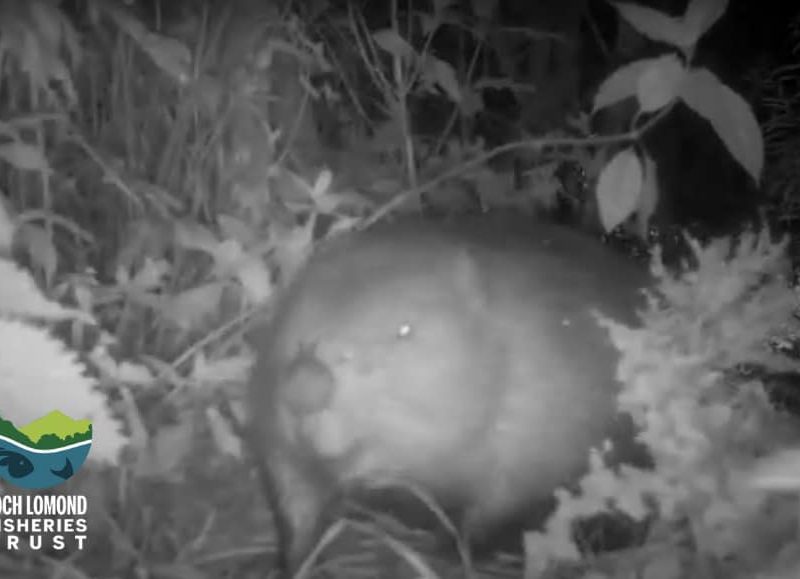

As part of our commitment to biodiversity, we are actively involved in the monitoring and surveying of the beavers reintroduced into the catchment at the beginning of 2023. This work ultimately aims to monitor any effects of the reintroduced beavers on local native fish populations, particularly on salmon and lamprey species.
European beavers were a native species found across the UK, until they went extinct 400 years ago! Mainly hunted for their fur and meat. In Scotland, beavers have been making a comeback since their trial reintroduction in 2008 and since May 2019 they are now a protected species. Loch Lomond is now regarded as a new catchment for beavers, after their translocation in 2023.
You can read more about the reintroduction of beavers across Scotland HERE.
Beavers play a crucial role in ecosystem restoration and conservation. Their dam-building activities create new wetland habitats, which enhance biodiversity and provide essential ecosystem services. By storing water and slowing its flow, they can also help mitigate the impacts of floods and droughts. However, it is essential to balance these benefits with potential challenges that may arise, such as impacts that could impede the movements of native salmon and lamprey populations.

The LLFT’s approach to monitoring and surveying beavers is rooted in scientific research and ecological principles. We strive to gather accurate and reliable data to better understand the impacts of beavers on the local aquatic environment. By conducting thorough surveys, we assess the beavers’ activities, their habitat preferences, and their influence on the ecosystem as a whole.
LLFT employs a variety of methods to collect data on the beavers in the Loch Lomond region. These methods include: field observations and camera trap footage. Through these methods we study beaver behaviour, feeding patterns, dam construction, and other activities. Allowing us to identify the areas they inhabit, population movements, and gain valuable insights into their ecological roles.
Check out our blog on beavers and how to spot them by clicking this link.

At LLFT, our work with beavers is an ongoing endeavour. Twice a year we conduct walk over surveys on nine tributaries of the River Endrick, in the Spring and Autumn. During these surveys we record any field signs of beaver activity, the locations of these field signs and take photographic evidence. By keeping an eye on the beavers activity in these burns, we can evaluate the beavers’ positive contributions and identify any potential challenges posed to local fish populations. Ultimately furthering our understanding of beaver ecology and management strategies. This project is being undertaken in conjunction with the RSPB, Naturescot, and local communities.
If you would like to learn more about our work or get involved, please reach out to us!